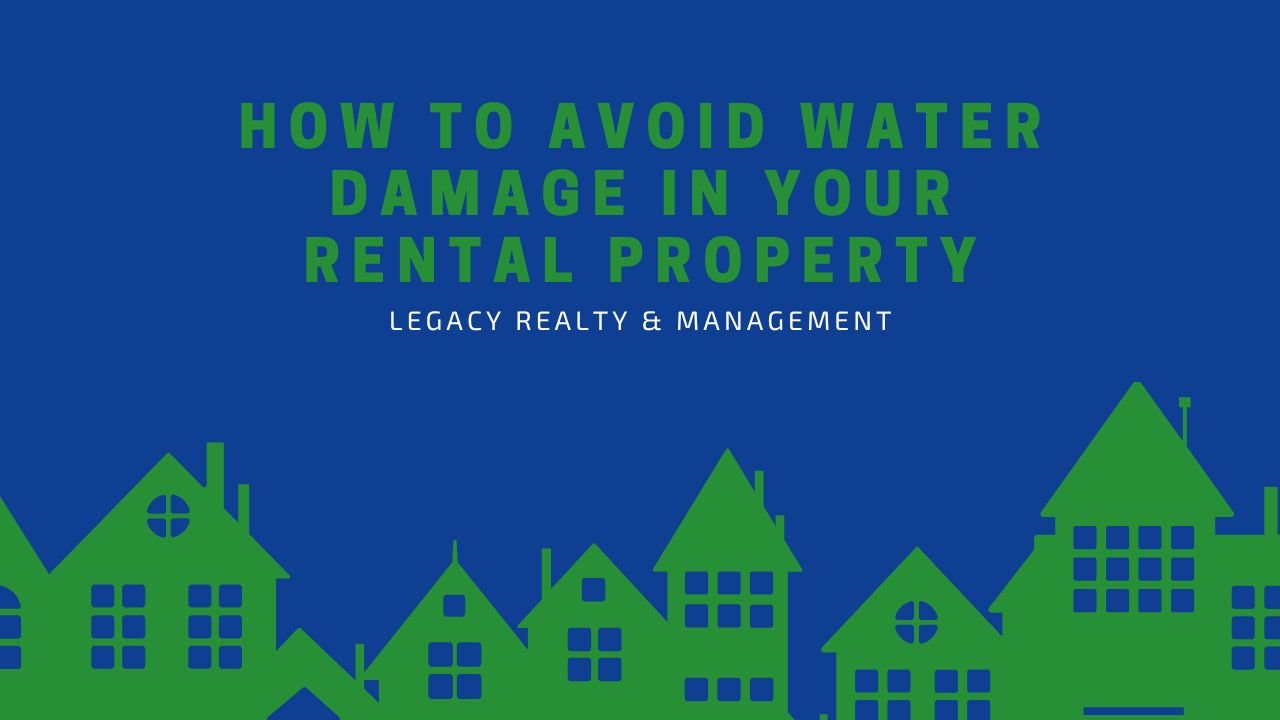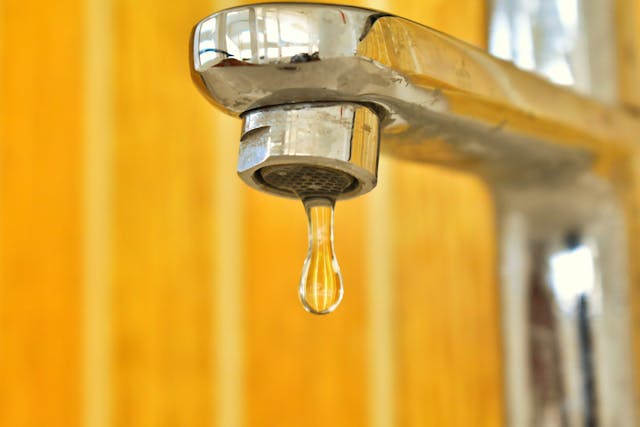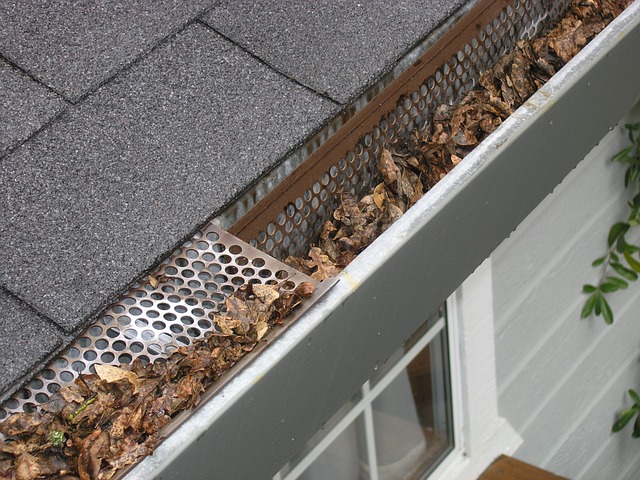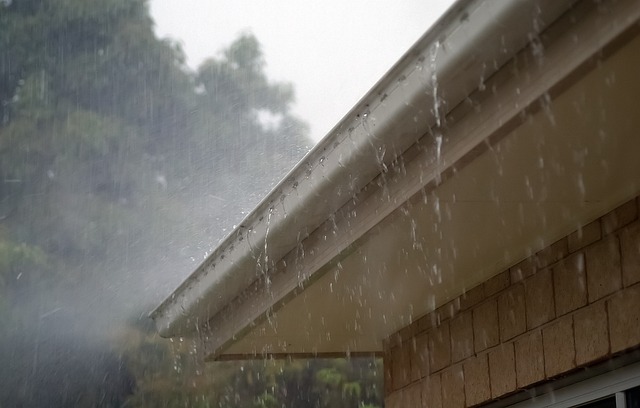
Owning a rental property goes beyond addressing tenants’ requests, managing the
lease agreement
and collecting rent every month. Maintaining the condition of a rental property is crucial for landlords to preserve the value of their properties, attract reliable tenants, and to ensure consistent rental income.
Investing in upkeep is essential for long-term profitability and protecting the property's value. Unfortunately, maintaining a rental property in good condition is no easy task. Normal wear and tear, unexpected repairs, and emergency maintenance issues can work against you.
As a landlord, you cannot prevent all emergencies. However, by knowing how to react, you can minimize the damages and prevent your property from deteriorating. In this article, Legacy Realty & Management will go over everything you need to know about preventing water damage in your rental property.
What Is Water Damage?
Water damage is the physical damage to a property caused by water. This can occur in various ways, through leaks in the roof, pipes, windows, or due to flooding from heavy rains and storms. Water can leak from faulty appliances, like washing machines or dishwashers.
When water seeps into a property, it can cause serious damage. The moisture can weaken and rot the wood in walls, floors, and ceilings. Over time, water can also damage drywalls, causing them to sag, peel, or even collapse.

Paint and wallpaper may also bubble or peel off. Carpets and furniture can get soaked, ruining them beyond repair. If water damage is not spotted early on, it can lead to mold and mildew growth , which are a major health hazard and incredibly costly to deal with.
Water damage can also cause structural issues. It can weaken foundations and walls, causing cracks and other long-term issues. It might even cause electrical problems if water comes into contact with wiring, leading to safety hazards like short circuits or fires.
Common Causes of Water Damage
Water damage can come from various sources. Understanding the cause is key to preventing and addressing damage before it’s too late. Here’s a detailed list of the most common causes of water damage and their effects:
-
Leaks: Leaks, whether from pipes, roofs, or appliances, allow water to seep into walls, ceilings, and floors, causing damage over time. Moisture can weaken structural elements, lead to mold growth, and damage electrical systems. If left unchecked, leaks can result in significant property deterioration.
-
Burst Pipes: Frozen pipes or old, corroded pipes can burst and release large amounts of water into the property. This can flood walls, floors, and even the foundation. The damage may affect plumbing systems, electrical wiring, and the building’s structure.
-
Faulty Appliances: Dishwashers, washing machines, and refrigerators with water dispensers can malfunction, leading to water leaks. Over time, seals wear down, causing leaks that slowly damage the surrounding areas, including floors, walls, and cabinets.
-
Clogged Gutters: Gutters are designed to channel rainwater away from the roof and foundation. However, when gutters become clogged with leaves, twigs, or debris, rainwater can overflow and seep into the building’s foundation, causing cracks, leaks, and basement flooding.

-
Flooding: Floodwater can damage flooring, furniture, electrical systems, and walls, leading to costly repairs and potential health risks from contaminants in the water.
-
Unsealed Windows and Doors: If windows and doors aren’t properly sealed, rainwater can seep through gaps, causing water to infiltrate into the walls, flooring, and frames. Over time, the moisture can lead to wood rot, mold growth, and insulation issues.
-
Poor Drainage: If the land around the property isn’t properly graded, water can pool near the foundation during rainstorms. Over time, this can lead to foundation cracks, which allow water to seep into the basement or crawl space, causing damage to walls, floors, and even the foundation itself.
-
Sewer Backup: A sewer backup occurs when the sewage system becomes overloaded or blocked, causing waste and water to back up into the property. This can be a huge health hazard, as well as cause serious damage to flooring, drywall, and your tenants’ personal property.
-
High Humidity and Condensation: Excess moisture in the air, especially in areas like basements or attics, can lead to condensation on walls and windows. Over time, this can result in mold growth and the deterioration of insulation, wood, and drywall.
Top Tips for Preventing Water Damage
A proactive approach is crucial for maintaining your property’s condition and protecting your investment. Here’s a list of preventive measures you can take to minimize water damage on your rental property:

-
Regular Inspections: During inspections, keep an eye out for common signs of water damage, such as discoloration on ceilings, walls, or floors, musty odors, mold growth, warped flooring, and peeling paint and wallpaper. This will allow you to spot and address water damage before it escalates.
-
Regular Roof Inspections: Periodically inspect the roof for damaged or missing shingles, cracks, or wear and tear. Ensuring the roof is in good condition will help prevent leaks during the rainy season.
-
Clean Gutters and Downspouts: Clogged gutters prevent rainwater from being directed away from the property, potentially causing water to overflow and seep into the foundation. Clean gutters regularly to keep your investment safe .
-
Check Plumbing and Pipes: Regularly check plumbing, including pipes, faucets, and drains, for leaks or corrosion. Fixing small issues early can prevent major issues later on.
-
Maintain Appliances: Regularly inspect appliances like dishwashers, washing machines, and refrigerators for leaks or faulty seals. Replace worn-out hoses or seals to prevent leaks.
-
Install Sump Pumps: If your property is prone to flooding, installing a sump pump in the basement or crawl space can help prevent water buildup and protect the foundation.
-
Landscaping: Ensure that the landscape around the property slopes away from the foundation. Poor drainage can lead to water entering the property through cracks in the foundation.
Bottom Line
Water damage is one of the most challenging issues landlords can face. If not addressed early on, water intrusion can weaken your property’s structure, damage your property’s belongings beyond repair, cause mold growth, and damage electrical systems.
Addressing these issues can be costly, as it involves extensive repairs. By regularly maintaining your property and addressing leaks promptly, you can prevent water damage and maintain a safe, comfortable living environment for tenants.
If you need help inspecting your property or making repairs in a timely manner, contact Legacy Realty & Management! Our team of dedicated property managers is ready to take over these tasks and keep your investment protected!
